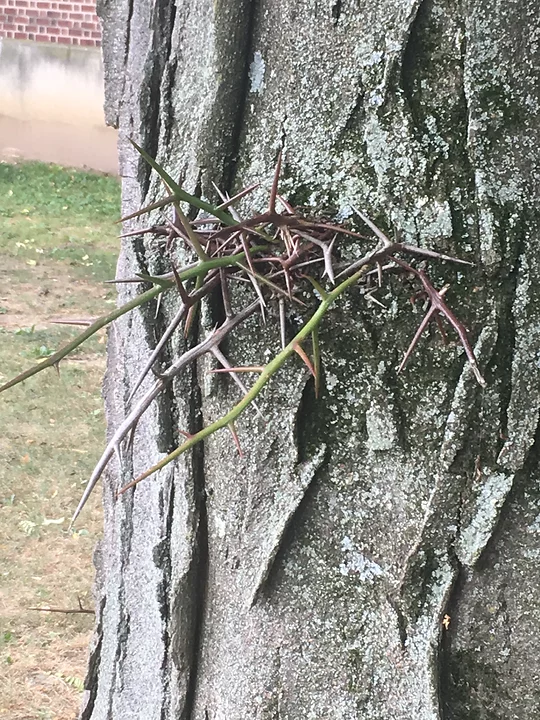
With a trunk circumference at breast height of about 12 feet, this tree is one of the largest Honey Locusts in the county. It’s also one of the most remarkable trees in the county because of its campus location.
The species’ long thorns — which protected the tree against browsing megafauna in the Pleistocene (giant deer, mammoths, etc.) — make this tree questionable in areas where the public may stray. “The long needle-sharp thorns are extremely vicious,” one arborist has noted, “and are not suitable for a domestic landscape.”
Honey Locusts in the nursery trade these days are invariably thornless cultivars, yet this beautiful natural tree remains.
This amazing species has seed pods that contain sweet pulp which grazing herbivores eat. Later, the viable (and fertilized) seeds are excreted in their droppings. Thus can this tree’s off-spring begin life at some distance from their parent.

